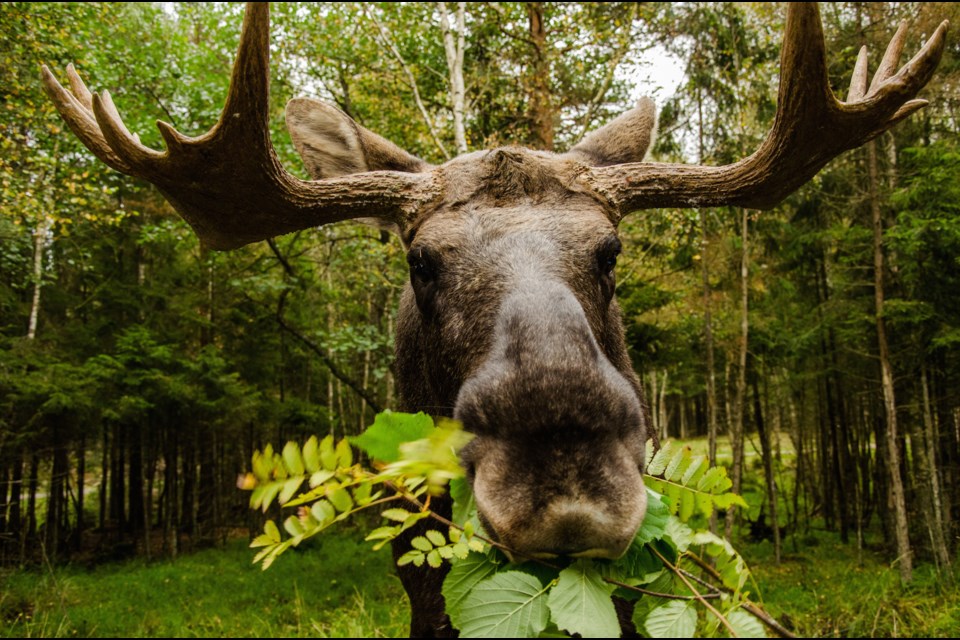THUNDER BAY - With moose season set to open next weekend, the Ministry of Natural Resources and Forestry is reminding hunters to take that extra moment to properly identify the species and sex of the animal before pulling the trigger, because failure to do so could result in hefty fines and even the loss of hunting privileges.
“Part of the hunting tradition includes identifying the species you are wanting to harvest and part of the ethics involved with hunting includes making sure we harvest the right animal,” said Ron Arnold, a conservation officer with the Ministry of Natural Resources and Forestry.
The MNRF issues tags for adult male and female moose, known as bulls and cows, as well as calves, which is a moose under one year of age. According to Arnold, it can be difficult to properly identify the sex and age of the moose when in the heat of the moment, even for skilled hunters.
“Part of the responsibility for hunters is if you are carrying a firearm is to know your target and what is beyond it,” he said.
One of the easiest ways to identify a moose is through its facial features. Adult moose have a long, over-hanging bulbous nose and a more rectangular face with large ears and a prominent bell under its neck.
A calf will have a much smaller nose and shorter ears and a much less prominent bell. Calves also have more of a square body shape with a sharply pointed shoulder hump.
Calves usually stand approximately 1.2 metres tall and weigh between 160 to 180 kilograms, compared to a cow that can stand approximately 1.8 metres tall and weigh between 320 and 545 kilograms. A calf will also appear to have more leg than body and a less muscular structure.
If an antlerless adult moose is alone, hunters are advised to take a moment to observe if a calf is nearby. A calf will not stray too far from its mother when it is still under a year.
“Hunters are asked to take their time, identify the target, and make sure their license and seal is applicable to that sex,” Arnold said.
“If we are misidentifying a species we are harvesting, we could be doing harm to the population dynamics because we manage the moose population for sustainability to provide maximum opportunities for hunters in Ontario as well as managing the wildlife themselves for their health.”
Arnold added that mistakes can happen and sometimes the incorrect species or sex can be killed by even an observant hunter.
“If they do accidently harvest the wrong animal, please contact us,” he said. “Do not leave it in the woods to waste. It’s disrespectful to the species.”
Every year, conservation officers receive reports of animals shot and left to spoil in the bush. In northwestern Ontario, there are currently eight cases of animals left abandoned that have not been solved, with the most recent case occurring on Oct. 3 this year near Walkinshaw Lake.
“A lot of times hunters may be a little scared or nervous to call,” Arnold said. “But I think it’s even worse if you leave something to rot knowing you left it to rot.”
According to Arnold, if a hunter does kill the wrong animal, a conservation officer will take a number of factors into consideration.
“It’s the officer’s discretion in the investigation whether it was an accidental misidentification or whether it was a legitimate poaching case,” he said. “The officer will make the determination in what is best.”
Hunters could face a warning, a part one offence notice, seizure of the animal, or a larger investigation could be launched if a hunter has a history of misidentifying animals.
Conservation officers can also issue fines in the field with a maximum penalty of a $25,000 fine and up to a year in jail. Hunters can also lose their hunting privileges and be prohibited from purchasing a hunting license.
Moose hunting season for the Thunder Bay wildlife management unit opens on Oct. 13 and runs until Dec. 15 for adult moose and the calf season is open from Oct. 20 to Nov. 2. For more information, visit the Ministry of Natural Resources and Forestry website.
